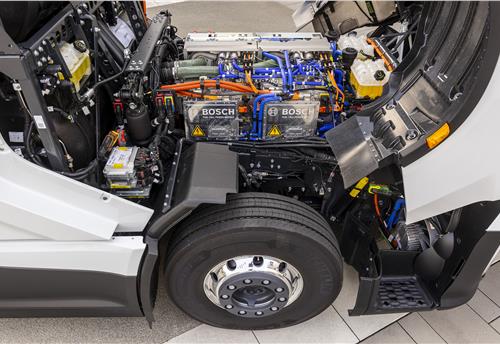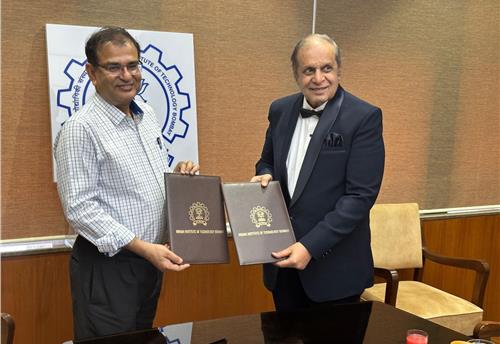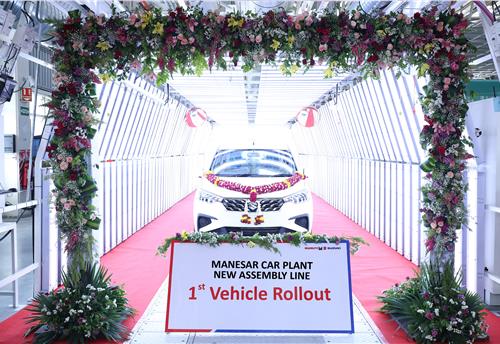World Bank forecasts 7.3% growth for India, making it world’s fastest growing economy
Latest Global Economic Prospect report says India's economy is robust, resilient and has potential to deliver sustained growth, more so now as factors holding back growth begin to fade.
The World Bank has forecast a growth rate of 7.3 percent for India this year and 7.5 percent for the next two years, making it the fastest growing country among major emerging economies. A top World Bank official said India's economy is robust, resilient and has potential to deliver sustained growth.
Growth in India is projected to advance 7.3 percent in FY2019 and 7.5 percent in FY2020, reflecting robust private consumption and strengthening investment, the bank said in its June 2018 edition of the Global Economic Prospect report.
The report, released yesterday, is the global lender's flagship publication on the state of the world economy.
It said that growth in South Asia is projected to strengthen to 6.9 percent in 2018 and to 7.1 percent in 2019, mainly as factors holding back growth in India fade.
India retains the tag of the fastest growing country among the world's major emerging economies, Ayhan Kose, Director of the Development Prospects Group at the World Bank, told PTI. "India's economy (today) is robust, resilient and has potential to deliver sustained growth," Kose said.
India's growth projections remain unchanged since its January 2018 forecast. China is expected to slow down slightly from 6.9 percent in 2017 to 6.5 percent in 2018, 6.3 percent in 2019 and 6.2 percent in 2020, it said.
India's growth potential is about 7 percent, and it is currently growing at a pace above its potential, he said, attributing it to the major economic reforms and fiscal measures being undertaken.
"India is doing well. Growth is being robust. Investment growth remains high. Consumption remains strong. All in all these numbers are encouraging," Kose said, referring to the World Bank report on India's growth rate figures. "And India is the fastest growing economy in major emerging markets," he said.
Noting that India's growth prospects are strong, the official said the potential growth rate of India is around seven percent.
"However, you look at it, India is in a very strong position," he said.
"In terms of economic growth, the fact that India is able to deliver a robust consumption growth, robust investment... All these are good news. The big issue is now that India has a potential to sustain this growth and we are optimistic about India to realise that potential," Kose said.
Seeking an increasing female labour force participation, he said on the productivity side India has room for improvement in secondary education completion rates.
Global risks remain for emerging economies
Noting that there are risks that all emerging market economies are facing because of global economic developments, he said, for example the disorderly tightening of global financial conditions could have implications for emerging market economies. "There is trade tensions out there. These tensions have been escalating in recent weeks. These have implications for growth prospects as well," he said.
Like other oil importers, India is also facing a higher oil prices, he said.
In its latest report, the bank said in India, investment growth has firmed recently, as the effects of temporary factors wane.
It said that growth in South Asia is projected to accelerate to 6.9 percent in 2018, mainly reflecting strengthening domestic demand in India as temporary policy-driven disruptions fade.
Elsewhere in the region, ongoing recoveries in Bangladesh, Pakistan and Sri Lanka are expected to be accompanied by moderating activity in Afghanistan, Bhutan and Maldives.
"Over the medium term, growth is expected to remain strong and reach 7.2 percent by 2020 amid robust domestic demand.
Meanwhile, downside risks continue to predominate. "They include the possibility of fiscal slippages, delays in reforms to resolve financial vulnerabilities and improve the health of regional banking systems, and a faster-than-expected tightening in global financing conditions," the report said.
Also read: Maruti, Tata and Honda pump up PV volume in May 2018
CV sales maintain strong momentum in May
Two-wheeler OEMs clock over 9 percent growth in May 2018
April sales of 2.3m units point to strong fiscal but costly fuel could be a dampener
RELATED ARTICLES
Bosch hydrogen engine tech-powered truck to be on Indian roads this year
The global supplier of technology and services is betting big on both electromobility and hydrogen. While announcing the...
IIT Bombay inaugurates Arun Firodia Research Floor
IIT Bombay, one of India’s top technical and research institutions, honours Kinetic Group chairman Dr Arun Firodia, one ...
Maruti Suzuki expands capacity at Manesar plant by additional 100,000 units
New assembly line at Plant A expands total manufacturing capacity at the Manesar plants to 900,000 units per annum. Alon...





 By Autocar Pro News Desk
By Autocar Pro News Desk
 07 Jun 2018
07 Jun 2018
 3255 Views
3255 Views









